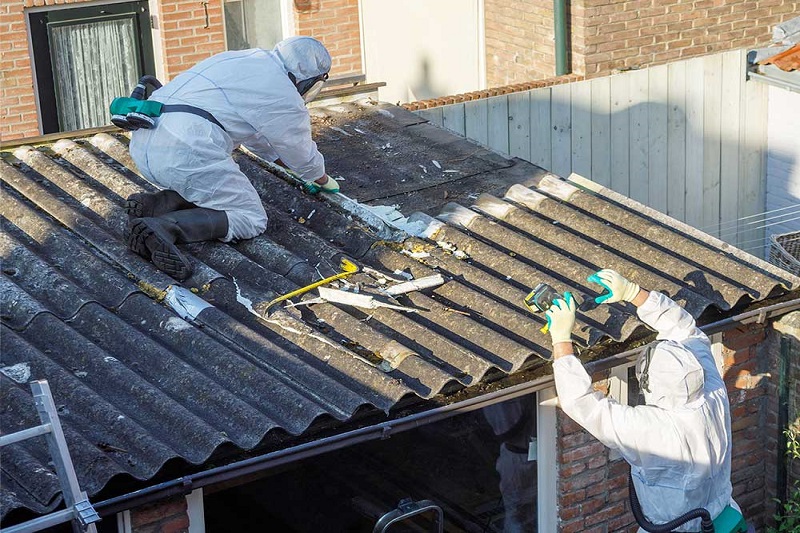
How often have you halted, glanced around your living space and pondered about what could be silently lurking within your walls, roof or floor? When was the last time you considered the prospect that your place of comfort, your cherished adobe could be cultivating the single largest health risk right under your nose? And most importantly, what are you to do if that danger posed a significant blow to your health and happiness? These are the questions that we find relevant to act upon in today's blog post. The peace and security of your home is no place for complacency, especially when it comes to something as insidious as asbestos.
To many, asbestos identification seems like a problem of yesteryears – a distant memory enchanted in the annals of outdated building materials. Yet, tens of thousands of homes in Australia alone continue to harbour these mineral fibres, a hidden threat with potentially lethal implications. As an homeowner, it befalls unto us to comprehend and navigate through this issue. Therefore, it's absolutely pivotal to understand what asbestos are, their implications, and how you can safeguard your home against this latent hazard.
Tracing its root to the ancient Greeks, asbestos identification has had a longstanding association with architecture, lauded for its fire resistance and insulation capabilities. However, as we delve deeper into this topic, it soon becomes clear that this once-celebrated building material conceals a dire health threat. Prepare yourself for a deep dive into the world of asbestos: its identification, implications and the pressing need for testing.
The ABC of Asbestos Identification: What, why, and When
Asbestos, in essence, is a group of naturally occurring minerals known for their resistance to heat and corrosion. But that, which started off as a boon, soon turned into baneful reality as the real costs of asbestos were unmasked – it was costing people their lives.
Originally used widely in the building industry, asbestos came under intense scrutiny in the late 20th century when links to conditions such as lung cancer and mesothelioma became apparent. Evidence revealed that when disturbed, these materials release tiny fibres that, if inhaled, can lead to serious health problems. Lingering question that haunts us today is, when was your home built? Homes built prior 1990s could potentially contain asbestos, rapidly escalating the need for identification and testing.
Identifying Asbestos Identification - A Task Not to Be Overlooked
Identifying asbestos at home isn't as straightforward as we would desire. Asbestos was used in various building materials like ceiling tiles, pipe insulation and vinyl flooring – the list is worryingly non-exhaustive. The irony here is that the same features that made asbestos a versatile building material are the ones that make it so difficult to accurately identify visually.
As a responsible homeowner, it’s pivotal to employ professional services for asbestos identification. These experts adopt the best safety measures, ensuring lesser disturbance of these fibres, thereby, reducing the risk of asbestos-related diseases.
The Nitty Grittiest of Asbestos identification Testing
The process of testing for asbestos identification involves collecting samples from your home and sending them to a relevant lab. However, the truth is, you should never perform this process by yourself. Due to the potential risks, it's recommended that only accredited professionals with specific training handle and test for asbestos.

The Risks v/s The Peace of Mind: The Testing Paradox
Testing your home for asbestos can create a paradox – while on one hand, it can help identify and mitigate a risk, it can also be the source of disturbance, inadvertently releasing harmful fibers. But, when balanced against the potential health risks associated with long-term exposure, the sensible thing is to consider professional testing for complete peace of mind.
The Future is Asbestos-free – Steps Ahead
The path to an asbestos-free future involves organizations and homeowners working together. The first and most obvious step is proactive testing to identify the presence of asbestos. In case asbestos is identified, abatement procedures need to be undertaken by professionals. In fact, many countries have completely banned the use of asbestos, and others are gradually following this trend.
Conclusion: Asbestos identification Afoot – Answering the Call for Aware Home Ownership
In conclusion, asbestos identification represents a hidden menace that lurks within the silent corners of our homes. However, through understanding and awareness, this incredible anxiety can be mitigated. The health of our loved ones is paramount, a non-negotiable priority that sways the balance of any household.
In a world where we encounter numerous external threats daily, let's start by mitigating the ones that spring from within our most private spaces – our homes. No measure is too extensive when securing the sanctity of our homes. So, consider this blog post as a wakeup call – to perceive, pursue and achieve an asbestos identification free livelihood. The path to healthy, conscious, and mindful living begins at your doorstep – literally.

0 comments :
Post a Comment